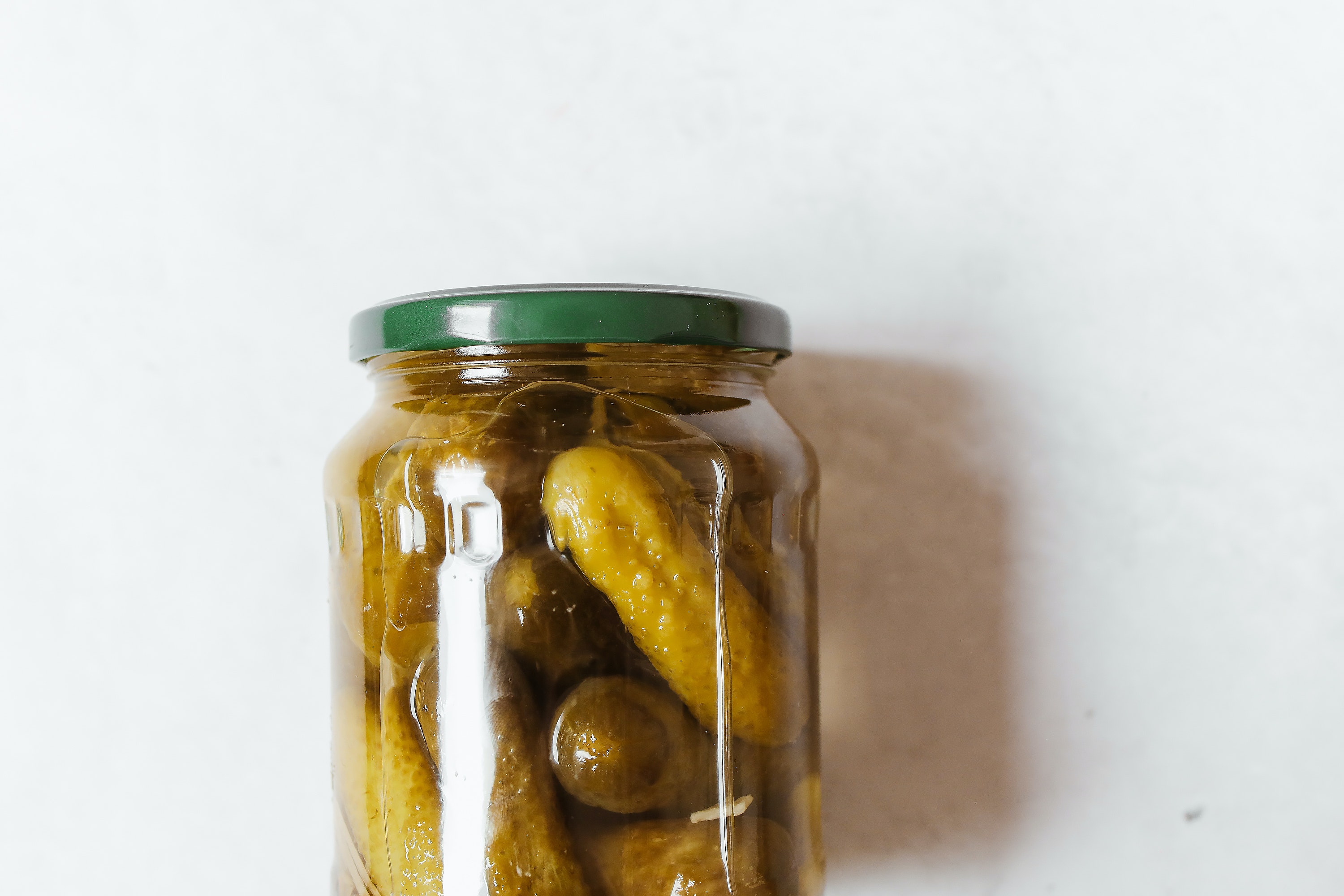Canned foods are prone to the growth of Clostridium botulinum, bacteria that causes botulism which is a deadly form of food poisoning. While some foods are acidic enough to prevent the growth of this harmful bacteria while canned, most need to be further acidified to ensure they’re safe for consumption (Binning, 2005). This necessitates a form of food preservation known as Pickling which is the process of food preservation using acidic preservatives either vinegar, lemon juice or brines added to a low acid food to reduce the PH to 4.6 and below. There are two basic categories of pickles. The first is pickles preserved in vinegar; which creates an acidic environment in which few bacteria can survive. The second type includes the use of salt brine which encourages fermentation. Fermentation allows the growth of good bacteria that makes food less susceptible to the harmful bacteria that causes spoilage of food. A good example of fermented pickles includes cucumber dill pickles (Beatte, 2010)[“Write my essay for me?” Get help here.]

Pickles have been around since 2030 BC when cucumbers were first pickled in the Tigris Valley.Between the late 1800s and the early 1900s; Eastern European Jews immigrating to New York introduced the pickling of cucumbers. They were piled in large barrels in a mixture of clean water, kosher salt, garlic, spices and dill and known as kosher dill pickles. They were often sold by the Jews on carts and soon became a profitable business. Over time, new varieties of pickles have been introduced from all over the world. Pickles can have a variety of flavors, i.e. sweet, salty, sour, and hot or a combination of more than one flavor. They are also not restricted to cucumber as shown by the lactose fermented cabbage introduced from Eastern Europe, the spiced cornichons from France, pickled plums from Japan and pickled eggplants and peppers from Italy. (Colwell, 2008).[Need an essay writing service? Find help here.]
There are many references to the word pickle; the most common is to mean pickled cucumbers. There are six main types of ingredients necessary for pickle making. The most important element, of course, is the cucumber. The most preferred are of the thin-skinned variety with a likely number of warts and which have a proper size. Another critical ingredient is the acidic component, which is key to the process. Vinegar is the most common choice and makes up the bulk of the liquid used to pickle. It has a relative contribution to the flavor of the pickled cucumbers, giving them a sour taste. In addition to those two attractive attributes, vinegar is a preservative and is also non-toxic, making it the best choice for pickling. Other ingredients used that have an impact on the final taste of the pickles include sugar, which gives off a sweetness that balances the sour taste of vinegar and makes the pickles plump and firm. Salt which enhances the flavor and has protective qualities as well, and finally, herbs and spices such as dill weed, cinnamon, cloves, fennel for their aroma. Firming agents such as alum may also be used to give pickles the crispier fee without necessarily impacting the flavor.
The process of pickling may take as many as 42 days. Although simpler methods at home may do it, there are pickle manufacturers who use a four step process in the preparation. The first step is the harvesting. If the cucumbers are to be transported for long distances, refrigeration is used to ensure their freshness which plays a vital role in the final flavor. They are also cleaned to reduce any trace amount of bacteria on the cucumbers that may ruin the end product. The second step in pickling is preservation which may be done through fermentation, refrigeration or pasteurization. Refrigeration and pasteurization produce pickles with a shorter shelf life than those produced using fermentation. The pickles are then processed and packed in airtight containers to prevent spoilage (Sims & Zahara, 2008).[Click Essay Writer to order your essay]
Some challenges may arise with pickled food. There are also some signs that may allude to these problems, among them; Soft or slippery pickles which occur when the liquid used was not sufficiently acidic. The cucumbers may also have a strong bitter taste caused by pickling in an extremely acidic liquid. They may be shriveled or discolored, which indicates overcooking, the use of iodized salt or use in bad quality cucumbers. These problems may be avoided by using vinegar of the proper strength (5% acidity), always using fresh spices, and storing jars in a cool, dry place and following pickling instructions carefully (Ware, 2013).
References
Binning, L. K. (2005). Pickling cucumbers: Pest control. Madison.
Beattie, J. H. (2010). Growing cucumbers for pickling. Washington, D.C: U.S. Dept. of Agriculture.
Colwell, H. T. M., & Ontario. (2008). Mechanical harvesting of pickling cucumbers: Economic aspects. Toronto: Ontario Ministry of Agriculture and Food.
Sims, W. L., & Zahara, M. B. (2008). Growing pickling cucumbers for mechanical harvesting. Berkeley, Calif: University of California.
Ware, L. M. (2013). Studies with pickling cucumbers in Alabama. Auburn: Agricultural Experiment Station of the Alabama Polytechnic Institute.








